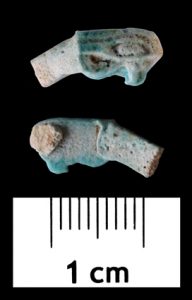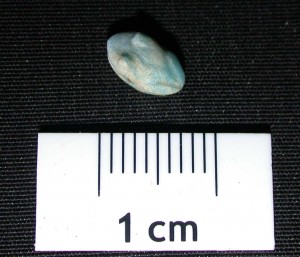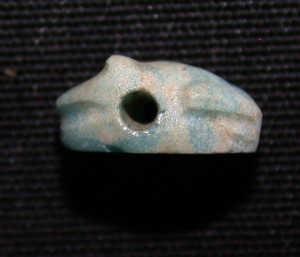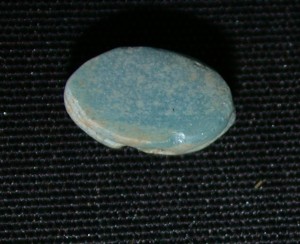Though partial, the finger ring SAV1E 2882 is an excellent representation of ancient Egyptian personal adornment. The ring is made from blue fayence molded into the form of a wadjet, broken through the shank (band) and at the opposite connection point with the bezel. The wadjet (or “Eye of Horus”) motif is amongst the most popular for amulets, produced from the Old Kingdom through the Roman Period. The imagery is taken from the loss (and recovery) of Horus’ own eye in his epic battle against Seth and was seemingly thought to protect the wearer from any and all types of harm.
Like so many aspects of their material cultural, jewelry served a dual function for the Egyptians, being both amuletic and indicative of wealth, rank or social status. Even fayence benefited from this duality, as a material that was widely affordable and admired for its transformative properties. Thus, it is no surprise that fayence is the most common material used for the production of jewelry. Compared to other forms of adornment, finger rings have a relatively late appearance (Middle Kingdom) and would have been widely produced by the settlement of Sai in the Eighteenth Dynasty. Similar rings are known from many New Kingdom sites, but the emergence of the openwork bezel for wadjet rings at this time may indicate SAV1E 2882 holds a humble place amongst its contemporaries.




